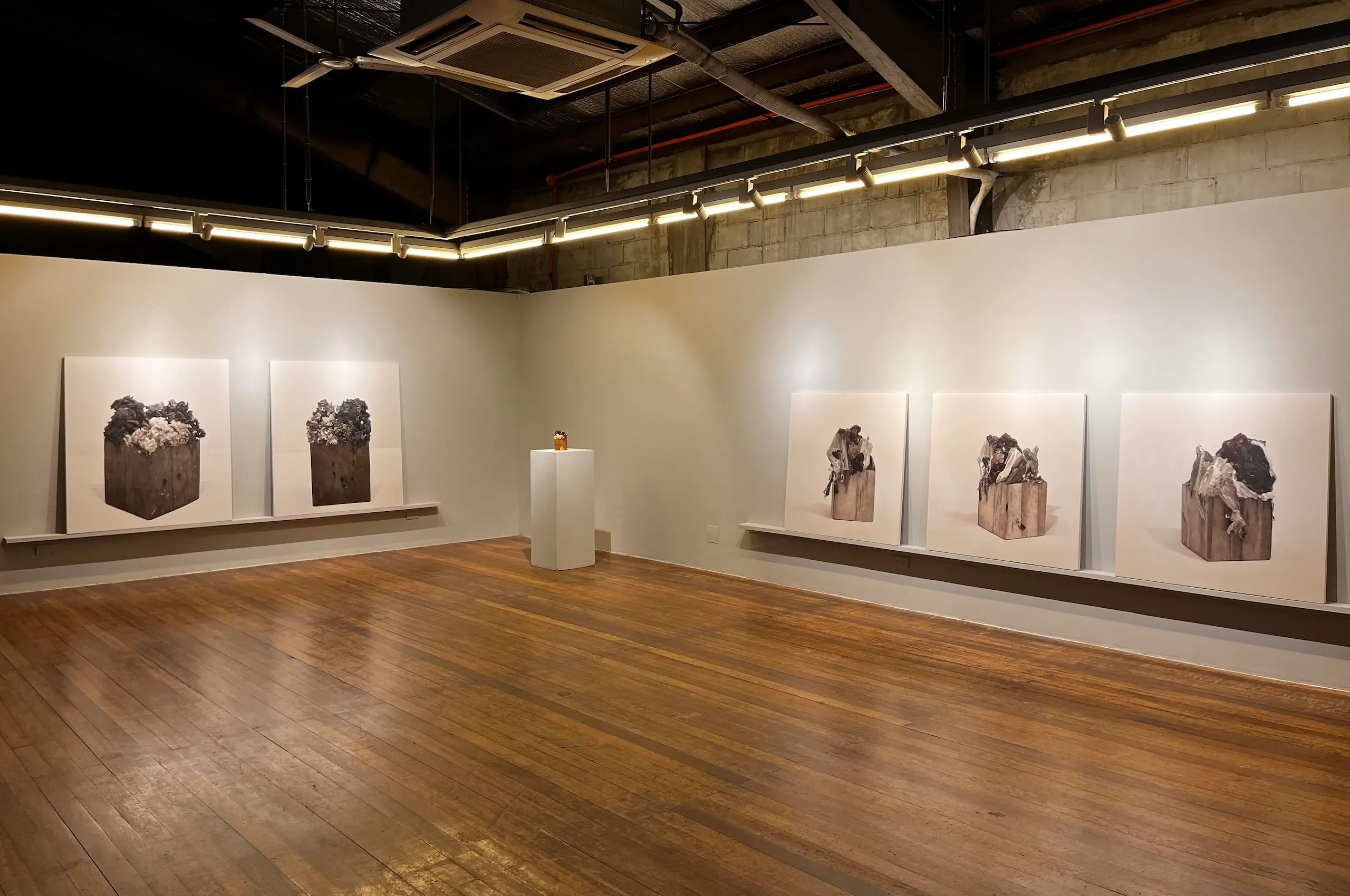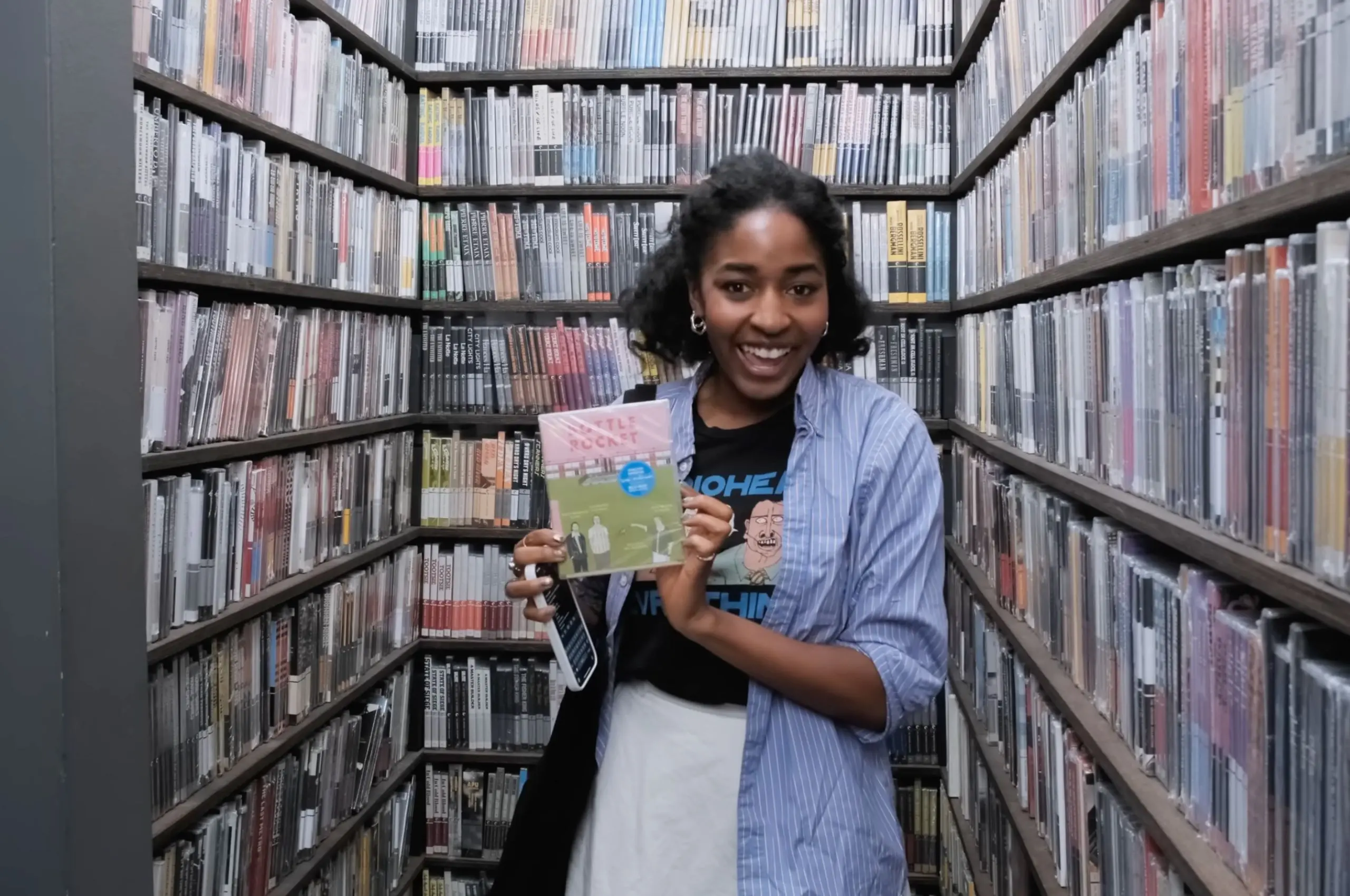Annie Cabigting has always been engaged and interested in emphasizing the act of seeing. This extends from her replications of the canonical paintings of intricate details, or her intentional, deliberate consideration of the role of the viewer in her work. This is suggestive that her body of work acknowledges and relies on the audience’s encounter and presence, which punctuates the art experience as something shared and interactive.
However, in Five Formed From Two, Cabigting’s latest exhibition at Finale Art File, she pivots towards an elemental gesture: two seemingly ordinary wooden blocks, once relegated to utilitarian ends, transform into vessels of pigment, density, and memory.
The show comprises two paintings on the left side of the wooden blocks and three on the other side. She discussed her process, taking photographs of these first from various angles, before translating them into paintings. Here, the works resist spectacle as they do not necessarily identify resemblance with her past works, stripped of unconcealed narratives and hatched by the ferocity of the monochrome. It unfolds as meditations on presence, on how objects can plow on as both material and conceptual. Perhaps, what emerges is not just a painting or a sculpture, but a premise on how truth, when bound to the material, is always provisional, partial, and shifting.

Ushering the audience into the space from the gallery’s ground floor, Cabigting places two wooden blocks, topped with thick, residual paint, at the center of the exhibition, which stem from her experience in two different localities. The larger block, which used to serve as a buffer between shipping crates or paletas in her Cubao studio, and the smaller block during her travels to Singapore. There is a transposition implied through these blocks, as each holds a history, visibly with chunky layers of pigment accrued over time. Coming from Cubao, where Cabigting stayed for a significant period of time, the bigger block speaks of her practice, absorbing pigments, residue, and gestures, which can be perceived as both her material archives and personal relics.
Cabigting purposively orchestrates her viewers into a tension, through geometry against the unpredictable sedimentation of pigment. One speaks of the order of strictness in terms of its form, and the other echoes the accident of accumulation, which both provide a tableau of push and pull. This is between restraint and exuberance, which underscores the works as something more about negotiation than resolution. Here, the eye of the viewer lingers between the stiffness of the shape and the disorderly beauty of the surface, which both converse with each other, never fully grasping one without being drawn back to the other. In contrast to Cabigting’s earlier works, which reimagine canonical imageries, the use of monochrome in this exhibition, on the five paintings formed from the two blocks, foregrounds the works’ authority as documentations.
“The exhibition, eventually, opens into critical questions: What names an object as art? How does painting emerge from objecthood? And how does art seize attention within the exhibition space?”
Circling back to the importance of the audience’s encounter and presence, works in this exhibition resist a singular vantage point where the act of looking is destabilized. The five paintings and two wooden blocks elicit a gaze from every angle possible, refusing hierarchy. However, none of these perspectives claim primacy. For instance, on one side, the object may appear dense, and on the other side, a delicate surface of residuals. One’s gesture of observation recognizes the limits of vision.

Here, the blocks become more than just objects; they are also images and metaphors. The literalness of the blocks persists, of course, but within the gallery space, it unfolds as a painting, as a concept. The exhibition, eventually, opens into critical questions: What names an object as art? How does painting emerge from objecthood? And how does art seize attention within the exhibition space?
Cabigting doesn’t offer us definitive answers, but rather, facilitates these questions as something open, making us move within them as we experience the works. Five Formed From Two is a modestly scaled exhibition yet rigorously conceived by the artist. One might not appreciate its impact based on grandeur, but it actually lies in precision, in how it asks us, its viewers, to recalibrate our seeing. Here, it is productive to say that she stays focused on her long-standing inquiry into perception, through a refined language of both the form and its object-ness. All in all, Cabigting reaffirms her dynamic positionality, as a prolific artist, to remind us that looking, at its very core, is a matter of questioning what we think we know.
Read the story and more in the Arts and Culture issue of Rolling Stone Philippines. Pre-order a copy on Sari-Sari Shopping, or read the e-magazine now here.





